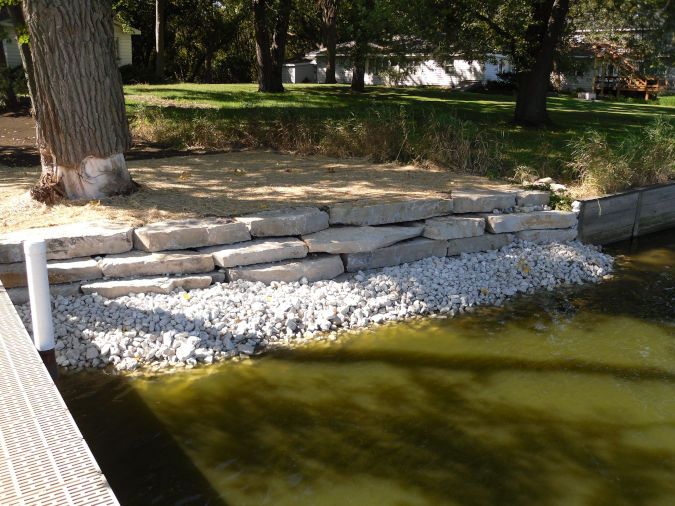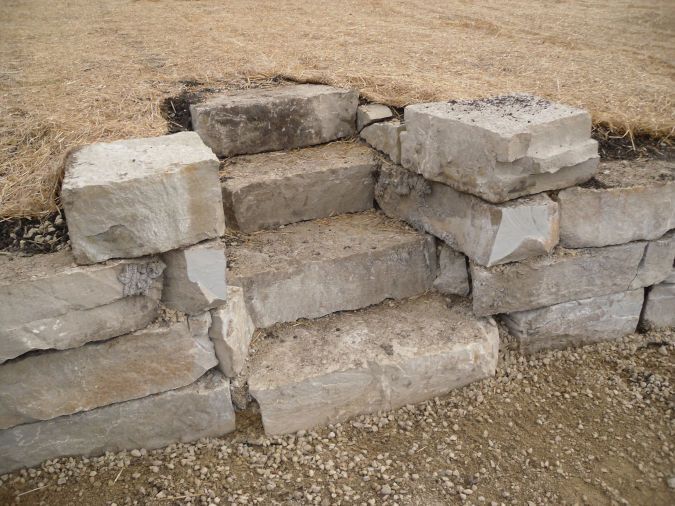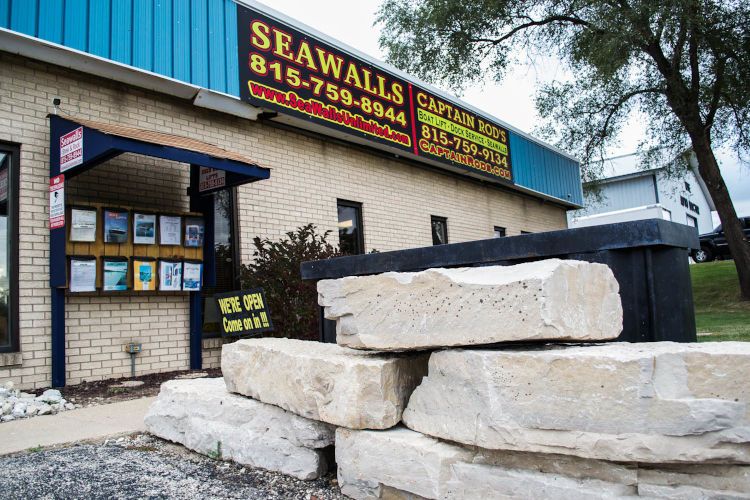An Outcropping Retaining Wall Benefits You Far More Than You Could Imagine!
Spring arrives soon, and you know what that means—more time to spend on your shoreline! But how can you enjoy your shoreline if it’s harmed by hazardous conditions, like severe weather or flooding or erosion? An outcropping seawall can protect your shore from those conditions!
Seawalls Unlimited installs quality retaining walls all the time. One of the more popular seawalls we install is outcropping walls. An outcropping seawall design handles the tough elements that can harm your shoreline and property.
Are you still on the fence about installing an outcropping retaining wall? Read on to find out the good, the better, and the best reasons to install an outcropping seawall!
What is an Outcropping Retaining Wall?
What is an outcropping wall? Outcropping happens when rocks or stones are placed in a way that juts out of their base. You see this a lot on natural structures, such as mountainsides.
You’ve probably also seen outcropping in your own neighborhood and not even realized it. This is because outcropping can blend in well with the environment. It has a very appealing natural look.
Our outcropping, which is limestone, comes from a quarry in Illinois. We install it throughout the state as well as in Wisconsin and Indiana.
Now, let’s look at why having an outcropping wall can be a good thing.

What are the Pros of an Outcropping Retaining Wall?
An outcropping retaining wall gives you security and safety for your property and shoreline. Let’s look at how exactly outcropping retaining walls do this.
1. Outcropping Prevents Flooding
If you live on a body of water, then flooding is bound to happen, which can cause damage to your home and shoreline. The costs of this damage include both property damage as well as personal loss. If your shoreline floods and it gets into your house, it can destroy personal belongings.
An outcropping stone retaining wall can take the brunt of the rising water levels. Each outcropping stone is stacked in a way that prevents the water from seeping into the ground. It also prevents the water from getting through as the soil and earth around it erodes.
2. Outcropping Prevents Erosion
Erosion is the gradual wearing down of something through repeated motion. In this case, the “something” being worn down is your shoreline. And the “repeated motion” is the current of water hitting the shore.
Erosion, like flooding, is common on shorelines. And like flooding, it can do great damage to your property. When your shoreline erodes, it loses its protective layers. Severe weather, more water, and flooding hurt your weakened shoreline even more.
Outcropping walls absorb and then deflect the motion of the current. They take in the waves and move them back out into the body of water. In this way, the seawalls make sure your shoreline avoids erosion.
3. Outcropping is Tough and Durable
Along with standing up to erosion and flooding, outcropping does well against other elements as well. These elements include wildlife, severe weather, and natural wear and tear.
In fact, the stones we at Seawalls Unlimited use are limestone: one of the toughest stones out there. People have used limestone throughout history to build manmade structures. It continues to be a go-to for different retaining walls, even today.
The results speak for themselves. Limestone, paired with expert installation, means your outcropping wall will last for years and years to come.
4. Outcropping is Designed for You
If you’re looking at how to build a stone retaining wall that suits your property and your needs, then outcropping is the wall for you! The different shaped slabs help give the outcropping a distinguished and unique look for your property.
Because we cut the shapes of the slabs to different styles, no one outcropping wall looks the same. The different outcropping wall designs add personality to your property. The designs also impact your property’s value positively. Your retaining wall stone ideas can even include garden landscaping, steps, and borders around your house.
And while each outcropping wall looks slightly different, they each perform the same duty just as well: protecting your shoreline.
5. Outcropping is Easy to Maintain
Like all seawalls, outcropping walls are fairly easy to maintain. In fact, we recommend avoiding excess cleaning of your outcropping wall. If you clean your outcropping, make sure you use a hose and gently scrub whatever the area is you want to clean. And make sure you don’t use abrasive cleaners.
Why? Those tough, durable limestone slabs we use are actually vulnerable to acids. These include anything containing citrus, vinegar, or ammonia. If you want your stones to be part of a long history of tough designs, avoid these cleaners.
6. Outcropping is Environmentally Friendly
Outcropping walls also help the environment. As the wall defends your shoreline, small animals might make homes in the spaces between the rocks. This habitation adds to our ecosystem and allows small marine creatures to really thrive.
The environmental aspect also extends to how outcropping seawalls look. The rugged, naturalistic design of outcropping helps it blend in with the surrounding area. It won’t be an eyesore for your neighbors, and will in some cases, add to your property value.
7. Outcropping Blocks Unwanted Guests
Furthermore, outcropping also prevents animals from making homes where they are not supposed to (i.e., on your property). Animals like muskrats can burrow underneath your property from the water and wreak havoc on your shoreline and home. These critters can create holes and divots where you might walk and even get inside your home.
A tough, sturdy outcropping wall will discourage these animals from invading your property.
What are the Cons of an Outcropping Retaining Wall?
There are slight downsides of owning an outcropping wall. Here are some potential disadvantages.
1. Quality Seawalls Cost Money
Like anything else, a quality product will cost a bit more. The average cost depends on the person and what their needs are. And while you could say that your shoreline has been fine for the moment, it won’t always stay that way.
Weather, in particular, is hard to gauge, especially in Illinois. We may go one season without too many bad storms. But that doesn’t mean the next season won’t bring torrential downpours. You don’t want to be caught in severe weather and have flooding as a cause of it.
Installing an outcropping wall now means not having to worry later. A vegetative, or natural, slope might do for the moment. But if you don’t make a small investment now, it could cost you a lot later.
Getting an estimate on your seawall should be your first move in protecting your shoreline.

Other Types of Seawalls May Work Better for Your Property
Seawalls Unlimited installs three different types of retaining walls: steel, rip rap, and outcropping. The success of each one depends a little bit on where you live. Therefore, you want to make sure your location is appropriate for an outcropping wall.
Outcropping walls do great in high-wake, high-velocity waters. Higher velocity currents won’t pose problems to the stones, especially if they’re cared for properly. If you live on a riverbed or low-to-no-wake body of water, you may want to consider a rip rap seawall instead.
Do You Want a Safe and Secure Shoreline?
Don’t let natural hazards keep you from enjoying your shoreline this summer! We are the number one shoreline retaining wall repair and installation company in the entire Midwest for a good reason. We protect your shoreline while giving your safety and security.
If you still have questions, talk to us on Facebook! We’d be happy to help you decide if outcropping is right for you!

